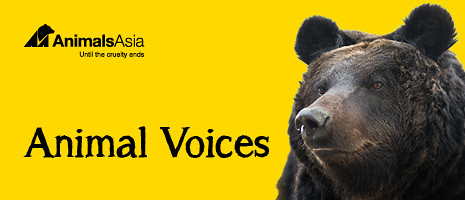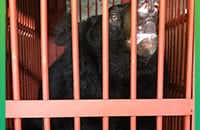Don’t be fooled into elephant abuse
24 April 2015
By Dave Neale, Animal Welfare Director
To be in the presence of an elephant is an amazing experience. Their sheer size overwhelms you, and their gentle social nature leaves you with a sense of calm and fulfilment that life can be and should be friendly and peaceful.
Yet this calm, good-natured temperament is repeatedly exploited.
Most recently, images of young western tourists in Thailand riding baby elephants through drunken pool parties rightly shocked many. But it should also serve as a reminder how easily people can be made ignorant of serious animal welfare issues.
To the enormous detriment of one of nature’s most awe-inspiring animals, we have learnt that if we physically and psychologically abuse these gentle giants we can force them into situations which we convince ourselves are amusing and entertaining.
The myriad elephant riding opportunities for travellers visiting Southeast Asian destinations are a prime example. What could be more “natural” than spending a few hours in the company of an elephant, exercising and washing them? After all, in many cases these elephants have been “rescued” from a life of hard labour on logging camps.

But often all is not as it seems.
Throughout your elephant riding experience, you will be in the “caring” hands of a mahout, a person that understands their elephant like no other. Yet in most cases this person will be in possession of an instrument to ensure your elephant remains under control. To provide such close contact experiences with such a powerful animal brings inevitable safety issues.
To mitigate the risks and protect your safety, the mahout will use a sharpened tool or hook to “guide” your elephant into the places and positions that you desire. The bullhook or similar tool is also used in some situations to mete out physical punishment. No matter how gently the bullhook may be used with an animal in your presence, at some point it first had to be established as a negative reinforcer. That means causing enough pain and discomfort for the animal to remember and seeks to avoid that pain by complying with instructions. A smaller handheld “jab-stick” may also be used to stab the elephant in sensitive places such as behind the ears, to ensure it complies as desired for the tourist.
The use of these instruments removes an elephant’s choice and control over its immediate environment and actions. The majestic animal is forced to comply with the wishes of the trainer regardless of whether or not the action is in its best interests.
Elsewhere elephants are also forced to endure the indignity and physical pain of performing circus tricks for entertainment. Elephants standing on their heads or spinning in circles only confirms our role as manipulators of all things beautiful. The animals themselves endure pain and indignity time after time to prevent them from receiving further physical punishments.
When you stop to consider all this from the elephant’s point of view, suddenly it does not seem quite so fun or innocent.
For many of these elephants, they started their lives in the wild with their family herds, only to be ripped away by human hands, beaten into submission via a brutal training regime, and forced into a life of abject misery on a logging or a tourist camp. Others have had the misfortune of being born into this life, subjected to abuse from the moment they were born.
If you truly love and respect elephants, do not ride them, do not pose for your photograph with them, and do not pay to see them perform circus tricks.
There are places which have truly rescued elephants from lives of misery, places that allow elephants to be elephants in the company of peers and do not force them to perform tricks or provide rides and “close contact experiences”. These are the places that provide true sanctuary.
Credible sanctuaries can be recognized by the following aspects:
- the elephants live in groups, and are not subjected to isolated confinement
- the elephants are not chained
- violence is not used in interactions with the elephants
- no breeding takes place at the facility
- there is no contact between tourists and the elephants
One such place is the Elephant Transit Home in Udawalawe, Sri Lanka. The orphaned elephants here can generally only be seen at feeding times, when they can be watched from a viewing platform for about twenty minutes while they are given milk. The rest of the time they spend in the National Park, out of view of people, in preparation for their return to the wild. Here, the elephants’ welfare comes first – as it should at all true sanctuaries.
BACK









 Freedom after two decades: Moon bears Nang and Mua rescued
Freedom after two decades: Moon bears Nang and Mua rescued
 With heavy hearts we say goodbye to our beloved Tulip
With heavy hearts we say goodbye to our beloved Tulip
 Three moon bears rescued from notorious bear bile farming hotspots in Vietnam
Three moon bears rescued from notorious bear bile farming hotspots in Vietnam